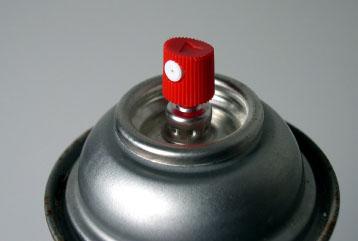PROVIDENCE, R.I. [Brown University] — Children were the victims in more than half of the emergency room visits for eye injuries related to aerosol cans between 1997 and 2009, according to a new study by researchers at Brown University. More could be done, they said, to prevent injury from the pressurized and often harsh chemical contents of the common products.
The youngest children, ages 0 to 4, were the most likely to be hurt with an estimated 2,830 emergency room visits during the study timeframe, according to the study published in advance online March 30 in the American Journal of Ophthalmology. In all, about 5,927 children 18 and younger came to hospitals with eye injuries from aerosol cans, according to the report’s estimates, which put the total for all age groups at 10,765.
“Any kind of injury like this that is preventable, we’d love to know more about,” said study co-author Paul Greenberg, a clinical associate professor of surgery at Brown based in the ophthalmology section at the Providence Veterans Affairs Medical Center. “Anytime you are talking about a pediatric eye injury, that’s especially disconcerting.”
Lead author Carly Seidman, a fourth-year student at the Warren Alpert Medical School of Brown, had been reviewing eye injury data when she noticed a number of aerosol-can related cases, especially in kids. She could not find studies estimating the national prevalence of the problem, however.
James Linakis at Hasbro Children’s Hospital and Michael Mello at The Miriam Hospital, both associate professors of emergency medicine at Brown, also worked on the study.
The figures the team produced, which are estimates based on data from 100 hospital emergency departments in the National Electronic Injury Surveillance Survey, add to evidence that children remain susceptible to preventable injuries from consumer products, Seidman said.

“This is part of a larger picture of household product injuries in children, which are something of importance and something to look out for,” she said. “I was surprised to see a notable number of aerosol can injuries.”
The report might underestimate the total number of injuries because it focuses exclusively on emergency room cases, the researchers noted. Many other people might have been treated in clinics or doctors’ offices, or simply cleaned up and recovered at home. More than 70 percent of the incidents occurred in the home.
Serious sprays
The most common way people hurt their eyes with aerosol cans was by self-inflicted spray, although sometimes they were hit in the eye when cans burst. Males of all ages accounted for 63 percent of those injured. The nature of the damage included significant irritation, chemical burns, or scratches and bruises on the eyeball.
The most common product involved in an emergency room visit was spray paint, followed by personal hygiene products such as hairspray, then cleaning products and bug sprays. Pepper spray injuries were very rare but in every case the victim was a child.
The team did not study prevention measures but said a range of measures that go beyond the small warning labels required on cans could help, Seidman said. The suggestions range from making labels larger, to increasing the counseling pediatricians give parents about aerosol can storage, to asking hardware stores to consider featuring goggles in the aisles where they sell spray paint.
Meanwhile the team noted that spray cans are often brightly colored, and many cleansers and personal hygiene products have smells that children may find attractive.
“Make sure these products are kept out of the reach of children,” Seidman said, “and always remember eye safety.”

